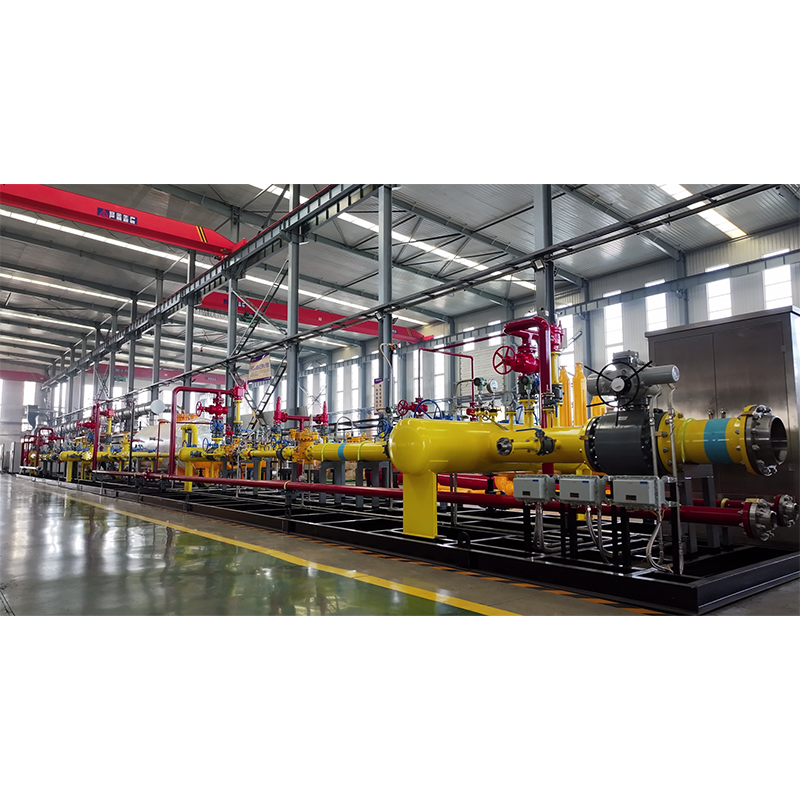
Oct . 13, 2024 23:04
Back to list
جهاز تنقية الغاز
Gas Purification Systems An Overview
Gas purification is a critical process in various industries, including oil and gas, chemical manufacturing, and environmental management. As industrial activities increase and environmental regulations become more stringent, the need for effective gas purification systems has never been more vital. These systems play a pivotal role in removing contaminants from gas streams, ensuring compliance with environmental standards, and safeguarding public health.
At the core of any gas purification system is the fundamental goal of improving the quality of gases released into the atmosphere. Industrial processes often generate gases that contain harmful pollutants such as carbon dioxide (CO2), nitrogen oxides (NOx), sulfur dioxide (SO2), volatile organic compounds (VOCs), and particulate matter. Failure to effectively manage these emissions can lead to significant environmental damage, contributing to air pollution, climate change, and various health issues.
.
Another widely employed method is absorption, involving the dissolution of gaseous pollutants into a liquid. This technique is particularly effective for removing acidic gases such as CO2 and SO2. In industrial applications, absorbents like amines are frequently used due to their high efficiency and capacity for gas removal. The absorbed gases can then be processed and neutralized, preventing them from being released into the atmosphere.
جهاز تنقية الغاز

Catalytic processes also play a crucial role in gas purification, particularly in applications involving NOx and VOCs. Catalysts facilitate chemical reactions that convert harmful gases into less harmful substances. For instance, selective catalytic reduction (SCR) technology is used to control NOx emissions in power plants and vehicular engines, converting them into nitrogen and water, which are non-toxic.
In recent years, advancements in technology have led to the development of more sophisticated gas purification systems that integrate multiple methods for enhanced efficiency. For example, regenerative thermal oxidizers (RTOs) combine combustion and heat recovery to break down hazardous organic compounds while minimizing energy consumption. These systems can achieve high destruction efficiencies, making them essential for industries that generate significant amounts of VOCs.
Additionally, the rise of big data and the Internet of Things (IoT) has transformed how gas purification systems are monitored and managed. Sensors and real-time data analytics now allow companies to optimize their purification processes, leading to improved performance, reduced operational costs, and enhanced compliance with emission standards.
While technology continues to evolve, the importance of gas purification systems cannot be overstated. Their role in protecting the environment and human health is fundamental to sustainable industrial operations. With increasing global awareness of climate change and air quality issues, companies across various sectors are investing in advanced gas purification technologies as a means to stay competitive and responsible.
In conclusion, gas purification systems are an integral part of modern industrial processes. By utilizing a combination of adsorption, absorption, catalytic reactions, and innovative technologies, these systems help mitigate the adverse effects of harmful gas emissions. As industries face mounting regulatory pressures and a growing commitment to sustainability, gas purification will remain at the forefront of efforts to protect our environment and promote public health.
Latest news
-
Safety Valve Spring-Loaded Design Overpressure ProtectionNewsJul.25,2025
-
Precision Voltage Regulator AC5 Accuracy Grade PerformanceNewsJul.25,2025
-
Natural Gas Pressure Regulating Skid Industrial Pipeline ApplicationsNewsJul.25,2025
-
Natural Gas Filter Stainless Steel Mesh Element DesignNewsJul.25,2025
-
Gas Pressure Regulator Valve Direct-Acting Spring-Loaded DesignNewsJul.25,2025
-
Decompression Equipment Multi-Stage Heat Exchange System DesignNewsJul.25,2025

